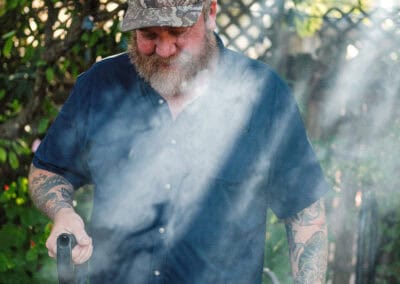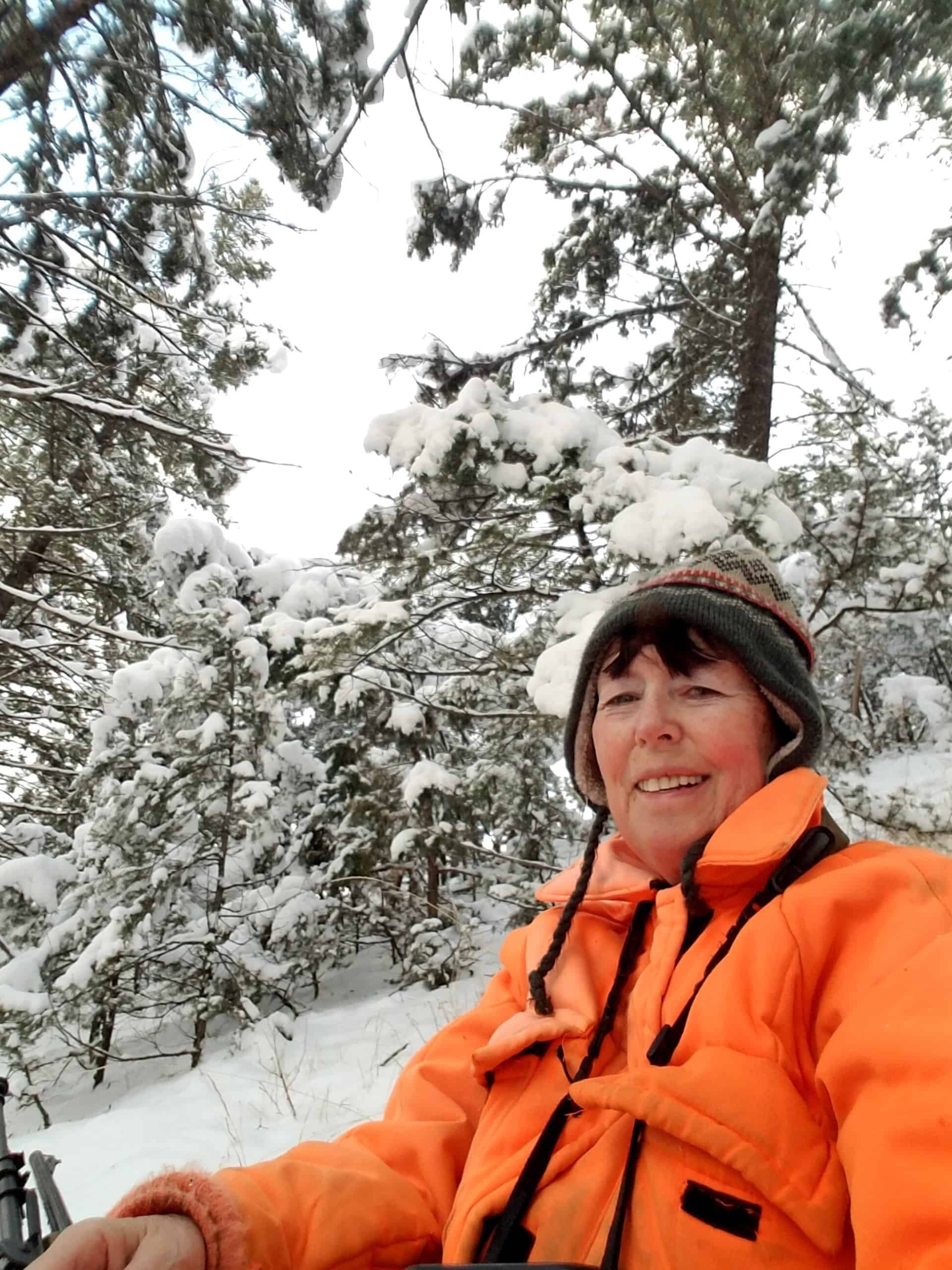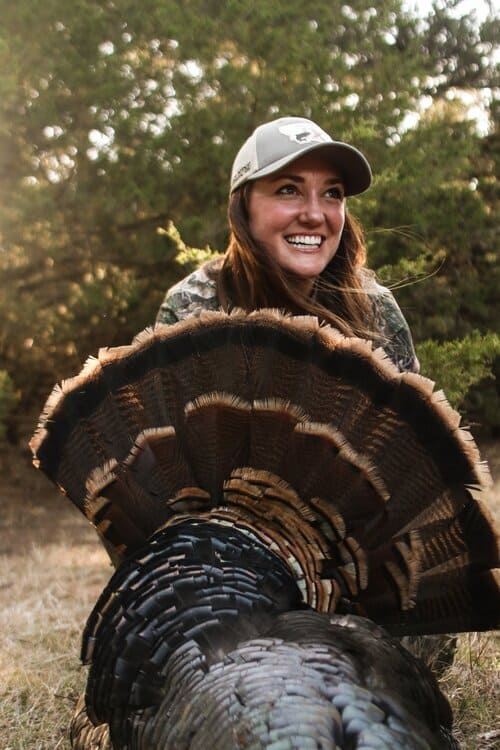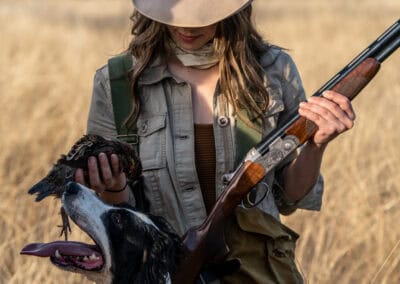Your cart is empty


Spanning the generations, women have planted themselves here among the cactus and pine. They’ve forged unconventional paths west — hunting and harvesting stories worth remembering. Today, they are still heeding the call of their heritage, bravely shedding all that is frivolous as they head deeper into the backcountry. They pursue that which will outlive them, in faithful stewardship of the tender shoots of conservation.
This league of extraordinary women have been tested and tried in the high lonesome; blooming amidst the rugged terrain with tenacity and grace that has changed the landscape on which they reside. They are too many to name — those women who have led the way — but each month we aim to share their stories. These are Women of the West.
MONTANA
Four miles upstream from Niagara Falls, in western New York, Grand Island rests in the middle of the Niagara River. Established after World War II, it became a place where families were large and neighbors were friends; this was the backdrop for Kathy Hadley’s upbringing.
“I was really lucky to be born when kids spent most of their time outside,” said Kathy, who was one of six children born to a steel-mill-working father, and a mother who was a homemaker. “I grew up spending time after school and on weekends along the river: swimming, fishing, exploring the woods, and collecting snakes and frogs. I think growing up this way allows you to develop a natural, lifelong quest to be outside as much as you can, and it certainly has stuck with me.”
Her continued love of the outdoors is what brought Kathy west. She married a professor at the University of Buffalo, Wayne, who was a hunter and fly fisherman, and they spent their summer break each year in Montana. “Wayne would also come back out to hunt big game as well, so I finally asked him, ‘Why don’t we just move instead of spending all this time traveling out here?’.” And so they did.
Kathy was in her 20s when she and her husband quit their jobs, put their household belongings in storage, and headed west with their truck and camper trailer. “I loved every minute of it,” she reminisced, adding that they spent six months camping, fishing and hunting with their four-year-old son, all while looking for jobs. Nine months later, Kathy was hired by the Montana Board of Natural Resources.
Kathy’s husband, a fish biologist by training, got a job with Montana Fish & Wildlife, so they moved to the Deer Lodge Valley, where they still reside today.
“I started as a volunteer for the Montana Wildlife Federation in 1986,” said Kathy. She went on to become a board member of the Montana Wildlife Federation for many years, and is currently the Chair of the National Wildlife Federation Board of Directors. “I ran for the board of directors because I love wildlife and wildlife habitats, and I have a couple of degrees in biology.”
In the 1980s and early ’90s, tensions were high between landowners, sportsmen and outfitters. “There were huge fights in the legislature every year about hunting regulations, trespassing, and the allocation of non-resident licenses, which are all very complicated issues.” In response, Kathy volunteered to develop the first, second, and third state-wide landowner/sportsman conferences that provided a platform for respectful dialogue and communication. The goal was to better understand the issues before they developed solutions.
Kathy then spent the next two-and-a-half years working to create a program that is still utilized today — the Block Management Access program. BMAs are private lands made available for public hunting. In return, Montana Fish, Wildlife, and Parks reimburses and assists landowners in regulating hunting access. Thirty years later, there are approximately seven million acres of private land open to public hunting in Montana, thanks to Kathy’s work. She’ll tell you it was a team effort.
“Hunters have a unique perspective when it comes to wildlife and wildlife habitats. I think of hunters and anglers as the ‘canaries in the coal mine.’ They are the first to see that the environments are changing in a way that non-consumptive users wouldn’t register,” she said.
Kathy spent the majority of her career as the Executive Director of the National Center for Appropriate Technology in Butte, MT, all the while ranching and raising their two boys on the homestead.
Now in retirement, Kathy spends her time hunting and fishing with her husband. “My very favorite to hunt is spring turkeys,” Kathy said with a smile. “After the long Montana winter, the birds come out, you’re in this beautiful place, the sun is coming back, the world is waking up — it’s just incredible.”
“I never felt like I had any pushback. I always felt welcome,” said Kathy, who was largely mentored in the field by her husband over the years. “Although I felt lonely at times. For 20 years, I was the only woman on the 40-person Wildlife Federation Board in Montana. I’m happy to tell you that’s changed in the last five years.”
Kathy believes the door for women to get involved has always been open — and she loves the enthusiasm of the new generation of women hunters. “You see more and more women coming along, where it was just me and the guys for a long time.”
She continued, “I love the courage that they have to go hunt by themselves and to figure out the hard questions. It just makes me smile thinking about it.” Kathy hopes that the next step for these women is to become conservationists.
“If women become conservationists, we can keep this wonderful thing we have in hunting and angling. To me, it’s just a natural progression of trying to protect the things you care about. As women, many of us are designed to nurture the things we love, and nature can be part of that. I think women have a natural affinity for protecting this heritage.”

Katie is a Montana-based writer and editor with a passion for people and their stories. Raised on a cattle ranch near Yosemite National Park she’s enamored by wide open spaces and the written word. Serving as digital and print editor for Modern Huntsman, you’ll likely find her, pen in hand, documenting the history and tradition, the beauty and adventure to be found hunting, fishing and ranching the American West.
Related Stories



Latest Stories


